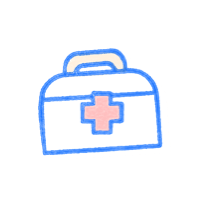Let’s explore lung sounds, their causes, and effective treatments through real-world EMS scenarios.
Rales (Crackles)
Cause: Fluid in the lungs
In a scenario where you respond to an elderly patient with difficulty breathing, you might hear bilateral rales. This often indicates Congestive Heart Failure (CHF). The patient may exhibit signs such as pink frothy sputum, hypertension, jugular vein distention (JVD), and possible peripheral edema. Effective treatments include CPAP (Continuous Positive Airway Pressure) to improve oxygenation and ventilation, nitroglycerin to reduce preload and afterload, easing the heart’s workload, and diuretics to reduce fluid overload. EKG monitoring is also essential to assess cardiac function.
In another case, if you encounter a patient with unilateral rales, it’s more likely pneumonia. The patient might have a fever, chills, body aches, fatigue, and a productive cough with green or yellow sputum. Treatments would include oxygen therapy to maintain adequate oxygenation, antibiotics as prescribed by medical control, hydration to help thin secretions, and antipyretics for fever management.
Wheezing
Cause: Bronchoconstriction
Imagine you respond to a young adult experiencing an asthma attack. The patient presents with a high-pitched whistling sound, difficulty breathing, use of accessory muscles, and possible cyanosis. Treatments include administering albuterol as a bronchodilator to open airways, ipratropium to reduce bronchial secretions, and epinephrine for severe asthma or anaphylaxis. Steroids like Solu-Medrol can reduce inflammation, and magnesium sulfate might be used in severe cases as a smooth muscle relaxant. Positioning the patient upright can also ease breathing.
Absent/Diminished Lung Sounds
You might encounter a patient with bilateral diminished lung sounds in a severe asthma case, indicating severe bronchoconstriction. The patient may have minimal air movement, severe respiratory distress, and a silent chest. Treatment involves aggressive bronchodilation with continuous nebulizers using albuterol and ipratropium, epinephrine for immediate bronchodilation, steroids to reduce inflammation, and magnesium sulfate for severe bronchoconstriction.
In a trauma scenario, a patient with unilateral absent lung sounds might have a pneumothorax. Signs include absent breath sounds on the affected side, JVD, tracheal deviation, high heart rate, and low blood pressure. Treatment involves high-flow oxygen to improve oxygenation, rapid transport to definitive care, needle decompression at the paramedic level to relieve pressure, and chest tube placement at the hospital.
Ronchi
Cause: Mucus or junk in the lungs
Consider a patient with pneumonia presenting coarse, rattling breath sounds, a productive cough with thick sputum, fever, chills, and body aches. Treatments include oxygen therapy to maintain adequate oxygenation, hydration to help thin secretions, antibiotics as prescribed by medical control, airway management using suctioning or advanced airway devices if needed, and fever management with antipyretics.
Stridor
Cause: Upper airway obstruction
In a pediatric case with croup, you might encounter a child with a gradual onset of symptoms, a barking cough, and difficulty breathing. Treatments include cool mist, corticosteroids, and nebulized epinephrine in severe cases.
For epiglottitis, you might respond to a patient with sudden onset of symptoms, drooling, painful swallowing, and difficulty breathing. The treatment focuses on maintaining the airway, avoiding agitating the patient, rapid transport, and possible intubation.
If you respond to a burn victim, they might exhibit signs of airway burns such as soot around the mouth or nose and singed nasal hairs. Treatments involve securing the airway, providing high-flow oxygen, and rapid transport.
In a scenario with a foreign body obstruction, a patient may suddenly choke and exhibit stridor. Treatments include back blows, abdominal thrusts (Heimlich maneuver), and possible direct removal using a laryngoscope and Magill forceps.
Lastly, in an anaphylaxis case, the patient may show hives, swelling, wheezing, stridor, and hypotension. Treatments include administering epinephrine, antihistamines (Benadryl), nebulized bronchodilators, and corticosteroids.
Understanding these lung sounds and their corresponding treatments can greatly enhance your ability to effectively diagnose and treat respiratory conditions.

